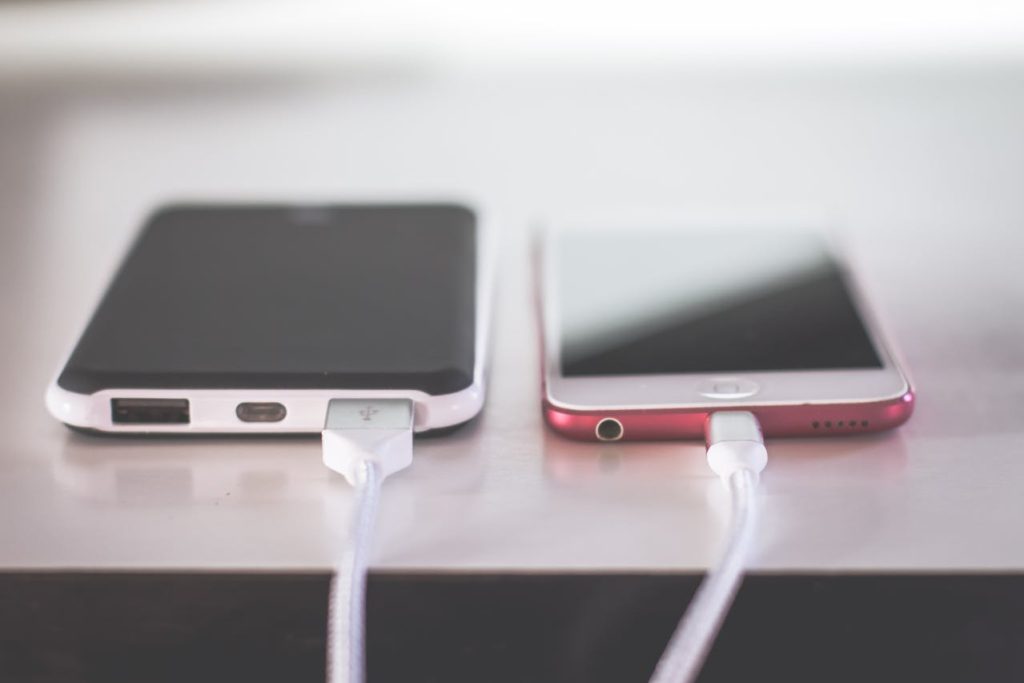Your cart is currently empty!
Never Leave a Charger in Outlet Without Phone. Here Are the Top 6 Reasons Why

Most of us rarely notice the small things that keep running in the background of our daily lives. A phone charger left in the wall after the device is unplugged. A television set humming in standby mode. They feel too minor to matter. Yet these tiny oversights tell a bigger story. One about energy wasted, safety risks ignored, and habits that accumulate into real consequences.
In entertainment, we often spotlight the dramatic—the headline controversies, the blockbuster successes, the scandals that dominate feeds. But just like that quiet glow from a forgotten socket, it is often the overlooked details that reveal the most about how people live and the choices they make. The charger in the wall is more than a utility slip. It is a symbol of how unconscious patterns ripple outward into culture, lifestyle, and even the stories we tell about ourselves.
The Hidden Drain on Your Power
A phone charger left in the wall may look harmless, but it rarely sits idle. Even without a device attached, electricity continues to flow. It’s a phenomenon energy experts call “phantom load” or standby power.

The numbers show just how significant this silent drain has become. According to studies, U.S. households collectively lose up to $19 billion each year to standby power, with the average home shouldering as much as $165 of that cost. It is money paid for nothing more than unused current, consumed by electronics we have already walked away from.
The consequences extend well beyond household budgets. Each wasted watt requires additional fuel to be burned, adding to carbon emissions and pressuring an already strained power grid. What starts as a charger left behind on the socket becomes part of a much larger pattern. This is a pattern where unconscious habits feed rising bills and environmental costs.
1. Energy Loss Without Purpose
A charger left in the wall may appear inactive, yet it still consumes power. The U.S. Department of Energy has documented that many devices continue to draw electricity even when switched off. This phenomenon is widely known as standby power or “phantom load.”
Research from the National Renewable Energy Laboratory and Efficiency Maine shows that these hidden loads can account for up to 15 percent of a device’s energy use, with U.S. households collectively losing nearly $200 annually to unused electricity. On a national scale, that translates into roughly $19 billion spent each year on energy that provides no benefit.
The problem is not just financial. Every unnecessary watt demands additional output from power plants, contributing to higher emissions and increased strain on an already burdened grid. What looks like a negligible oversight in one home becomes, in aggregate, a significant driver of energy waste. Unplugging unused chargers is a small step that prevents paying for nothing while also reducing the environmental toll.
2. Fire Risks from Idle Chargers
What looks like an inactive charger can, under the right conditions, become a hazard. Older devices, uncertified brands, or chargers left connected for extended periods may generate heat even when not in use. Over time, that heat can build unnoticed, creating a potential ignition source in the home.
The National Fire Protection Association (NFPA) attributes thousands of residential fires each year to electrical malfunctions and small electronics. When a charger sits near flammable materials such as bedding, curtains, or stacked papers, the risk increases. Even reputable, high-quality chargers aren’t exempt. Ventilation issues or prolonged wear can cause them to fail.
Unplugging a charger after use is therefore more than a cost-saving measure; it is a practical step in reducing preventable accidents. Making it a habit, particularly before going to sleep or leaving the house, lowers the chance of fire and contributes to safer households nationwide.
3. Reduced Lifespan of Chargers
A charger left in the wall is never truly inactive. Electricity continues to pass through its internal components, gradually wearing them down even when no phone is attached. Over time, parts such as capacitors and insulation degrade, making the device less efficient and more prone to overheating.
The impact becomes noticeable in everyday use. A once-reliable charger may begin to take longer to power a device, generate more heat during operation, or fail altogether. Replacing chargers more often not only creates an added expense for households but also contributes to the growing problem of electronic waste, much of which ends up in landfills.
Unplugging after use reduces unnecessary stress on the device and helps extend its lifespan. While no charger is immune to wear, taking small steps to preserve its function saves money, reduces clutter, and limits the environmental footprint of constant replacements.
4. Indoor Air Quality Concerns
Chargers are built from plastics and electronic components that can release small amounts of chemicals when they overheat. Among these are volatile organic compounds (VOCs) such as formaldehyde and benzene, substances the U.S. Environmental Protection Agency (EPA) has identified as contributors to poor indoor air quality.
Although the emissions may be subtle, their impact can be significant in enclosed spaces. For children, older adults, or individuals with asthma and allergies, exposure to VOCs can aggravate respiratory symptoms and lower overall air quality. The risks increase when chargers remain plugged in for long periods in bedrooms or offices with little ventilation.
Simple precautions can help reduce exposure. Unplugging devices when not in use, ensuring proper airflow indoors, and using certified electronics are straightforward measures that keep homes healthier. Attention to these details underscores how small adjustments in daily routines can make a measurable difference in well-being.
5. Household Hazards for Children and Pets
Chargers and their cords may appear harmless, but in many homes, they pose hidden risks to children and pets. The U.S. Consumer Product Safety Commission (CPSC) advises securing cords and unplugging unused devices, noting that contact with live electrical components can cause burns or shocks.
Pets face similar dangers. Puppies often chew on cords while teething, and cats may play with dangling wires. When a charger is connected to a live socket, that behavior can result in injury, electrical fires, or costly damage. What begins as routine curiosity can quickly turn into a medical emergency.
Creating safer spaces is often a matter of small adjustments. Unplugging chargers when they are not in use and storing cords out of reach helps prevent accidents and ensures that homes remain secure for both children and pets. These preventive steps add an extra layer of protection for the most vulnerable members of a household.
6. Contribution to E-Waste and Environmental Strain
When chargers wear out prematurely, the impact extends far beyond household expenses. Each discarded device adds to the growing stream of electronic waste, now recognized as one of the fastest-rising waste challenges worldwide. According to Natural Resources Canada, unnecessary energy consumption from phantom loads accelerates this cycle, leading to more emissions and shortened product lifespans.
The environmental consequences are long-lasting. Discarded electronics often end up in landfills, where components can leach toxic metals and chemicals into surrounding soil and water. These pollutants compromise ecosystems and persist for decades, making electronic waste a pressing sustainability issue.

Reports, including coverage by Wired, highlight how idle devices contribute billions of dollars in wasted electricity and additional carbon emissions each year. Yet the solution is within reach. Unplugging chargers when they are not in use extends their longevity, reduces waste, and helps limit unnecessary strain on energy systems. Each action, however small, contributes to a cleaner and more sustainable future.
Practical Steps for Safer and Smarter Charging
Awareness is only part of the solution. What matters most is turning knowledge into action. While leaving a charger in the wall may feel trivial, the habit of unplugging and managing devices more carefully can add up to meaningful results for households and the environment. These simple practices make the difference:
- Use switchable power strips: Plug chargers and small electronics into power strips with on/off switches. With a single tap, you can cut power to multiple devices, eliminating unnecessary standby consumption.
- Build reminders into your routine: Set an evening phone alarm or create a smart home notification to prompt unplugging before bed. Habits often form through repetition, and small cues help turn good intentions into consistent action.
- Select energy-efficient products: Look for chargers and devices carrying ENERGY STAR certification or “low standby” ratings. These products are designed to minimize wasted energy and signal a commitment to sustainable choices.
- Store chargers safely: Designate a drawer, container, or organized space for chargers when not in use. This reduces clutter, prevents accidental use, and helps keep cords away from children and pets.
- Track your energy use: Smart plugs and energy monitors can show real-time data on consumption. Seeing measurable results not only confirms savings but also reinforces the value of everyday changes.
Individually, these steps may seem modest. Collectively, they represent momentum—lower bills, improved household safety, and reduced environmental strain. Every unplugged charger is a reminder that small actions, repeated widely, shape meaningful outcomes.

The Power of Small Choices
More than a tale of electricity, the forgotten charger reflects a shift in perspective. What seems insignificant at home reflects a broader reality: small, repeated actions shape our finances, our safety, and the environment we all share.
Unplugging a charger will not singlehandedly solve global challenges, but multiplied across millions of households, it reduces energy waste, prevents accidents, and slows the tide of electronic waste. It is proof that responsibility does not always require sweeping reforms. Sometimes it begins with the simplest of choices.
In a world where the biggest headlines often command our attention, the charger in the wall reminds us that quiet, everyday decisions matter too. Change rarely arrives in grand gestures. It grows from the discipline of small habits repeated over time. And in that way, every outlet unplugged is a step toward a safer, smarter, and more sustainable future.
